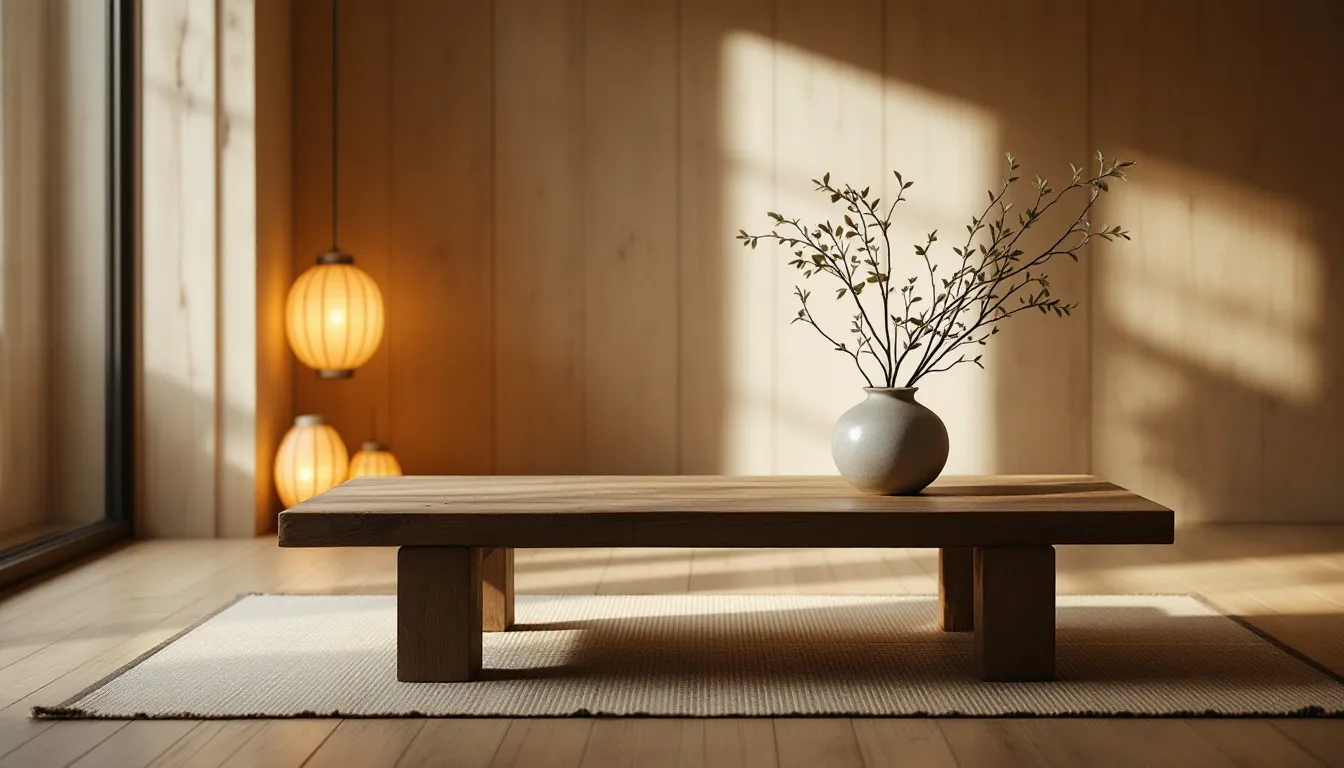What is wabi sabi? It’s a Japanese concept that finds beauty in imperfection and simplicity. This philosophy helps us appreciate life’s natural cycles and embrace a more mindful, accepting way of living. In this article, you’ll discover the origins, key elements, and practical applications of wabi sabi.
Key Takeaways
-
Wabi-sabi is a Japanese aesthetic that appreciates imperfection, simplicity, and the beauty of transience, encouraging mindfulness and contentment.
-
The concepts of ‘wabi’ and ‘sabi’ reflect the beauty found in naturalness and aging, respectively, promoting a harmonious appreciation of life’s imperfections.
-
Wabi-sabi principles have global influences, impacting art, design, mental health, and personal style, advocating for self-acceptance and celebrating uniqueness in everyday life.
Understanding Wabi-Sabi

Wabi-sabi represents a deeply-rooted Japanese aesthetic that cherishes the allure found in imperfection, incompleteness, and the ephemeral nature of existence. It diverges from modern standards that often idealize perfection, instead guiding us to embrace life’s inherent cycle of growth and decay by seeing beauty in what is weathered and aged. This approach extends beyond artistry. It’s an outlook on life itself that promotes both mindfulness and acceptance.
In line with this philosophy, wabi-sabi invites us to discover splendor within simplicity and daily experiences. Eschewing complexity or immaculate symmetry for more natural presentations, it honors the commonplace alongside subtle elegance. The essence lies in recognizing happiness within modest aspects of everyday living as well as appreciating the raw appeal presented by materials drawn directly from nature.
As a distinct Japanese aesthetic principle, wabi-sabi endorses finding delight in asymmetry coupled with unassuming qualities while maintaining a deep bond with our environment. By valuing serenity found within simple realities around us—a perspective woven into traditional Japanese aesthetics—wabi sabi nurtures an enriching lifestyle grounded firmly on principles such as solitude yet filled with fulfillment.
Origins of Wabi-Sabi

The concept of wabi-sabi originated during the Song Dynasty in China, under Taoist influence, which fosters an admiration for beauty that is rooted in austerity and humility. This set of ideas found a harmonious echo in Japan where they were cultivated through Buddhist doctrines, emphasizing the transient nature of existence and life’s innate struggles.
Wabi-sabi became particularly significant within Japanese culture around the 16th century as it intertwined with the traditional tea ceremony—a practice embodying simplicity, authenticity, and reverence for ephemeral moments—thereby resonating deeply with wabi-sabi principles.
Merging two words into one phrase, ‘wabi-sabi’ conjoins ‘wabi,’ representing quiet yet profound rustic allure. Alongside ‘sabi,’ pertaining to the grace discovered within aging and decay. Together these notions form an intricate aesthetic philosophy that venerates life’s natural progression while underscoring each term’s individual significance.
Key Elements of Wabi-Sabi
Understanding the Japanese concept of wabi-sabi requires comprehension of its fundamental elements: wabi and sabi. Although distinct, these components unite to create a cohesive essence that promotes embracing the imperfections and fleeting nature inherent in life.
Wabi
Wabi represents the allure discovered within simplicity and authenticity. It conjures images of the rustic lifestyle and conventional Japanese tea rituals, highlighting a minimalist approach and the understated grace inherent in natural substances. This notion fosters a substantial bond with nature alongside an intense recognition of genuine beauty that permeates everyday life.
In its historical progression, ‘wabi’ has transformed from associations with desolation and void to symbolize inner wealth and happiness derived from living simply. Such evolution is manifested in how wilting autumn foliage—iconic representations of wabi-sabi ideals—demonstrate both nature’s transient splendor and fleeting existence.
Sabi
Conversely, sabi represents the aesthetic appeal found in aging and decay. It emphasizes a profound respect for how time’s progression imparts personality and complexity to both objects and our existence, underscoring the idea that wear is an integral part of life’s natural rhythms. Sabi embraces the transient nature of all things with not just acceptance but also joy.
Sabi esteems the stories told by well-worn items, showcasing their past while celebrating the allure brought forth by conspicuous flaws. This playful outlook promotes a mindful appreciation for commonplace beauty, promoting serenity and satisfaction in daily living.
The Harmony of Wabi and Sabi
Wabi and sabi converge to form an aesthetic ideal that finds harmony in life’s imperfections, embracing the ephemeral quality of our existence. This philosophy fosters a sense of presence, urging us to appreciate the transient aspects of life with acceptance.
By viewing imperfections as elements of beauty, wabi-sabi shifts our perspective towards valuing atmosphere and profound aesthetic experiences. Through this fusion, we are invited to deepen our appreciation for living by recognizing that flaws can pave the way toward tranquility.
Wabi-Sabi in Japanese Arts

Wabi-sabi influences various forms of Japanese art, including:
-
Traditional music
-
Poetry
-
Ceramics
-
The revered tea ceremony
These arts embody the principles of acceptance, contemplation of imperfection, and the appreciation of impermanence, highlighting their impermanent nature.
Tea Ceremony
The tea ceremony in Japan is a deeply ingrained cultural practice that encapsulates the essence of wabi-sabi, an aesthetic philosophy centered on finding beauty in simplicity and appreciating the inherent qualities of natural materials. This shift from viewing wabi as negative to embracing it as a positive aspect exemplifies how enjoyment can be derived from life’s imperfections, which is at the heart of this traditional ritual.
A pivotal figure within this tradition, Sen no Rikyu played an influential role in shaping the principles of wabi-sabi through his revolutionary approach to flower arrangement. Eschewing elaborate designs for modest vessels adorned with wildflowers, he highlighted nature’s unrefined beauty and its parallels with life’s ephemeral character—a theme integral to both flora and our existence.
Embodying the values of minimalism, authenticity, and transience—the key components mirroring wabi-sabi thought—the Japanese tea ceremony stands as a testament to these ideals summarized by this singular concept word. It represents not just a mere appreciation for aesthetics, but also embraces joyous acknowledgement of transformation rooted within nature’s imperfect details.
Ceramics and Kintsugi
Kintsugi, the practice of repairing broken pottery with gold, stands as a vivid manifestation of wabi-sabi tenets. Having emerged in the 15th century, this technique signifies appreciation for imperfection and steadfastness over time. By accentuating fissures and restorations with gold, kintsugi turns fractured items and their shattered fragments into distinctive artworks that honor their past flaws.
Pottery artisans adopt wabi-sabi by crafting pieces that are intentionally irregular and distinct to showcase the innate allure of crude substances like stone along with an appreciation for lopsided design. This mindset not only recognizes blemishes but also enhances them, rendering each creation an emblematic representation of transient beauty.
Through practices such as kintsugi and wider ceramic arts, we see how wabi sabi endorses reverence for life’s natural progression from birth to degeneration to rebirth—imparting deep insights into enduring splendor together with wisdom derived from accepting change.
Poetry and Haiku
In Japanese poetry, particularly in the form of haiku, there is a deep embodiment of wabi-sabi ideals. These brief yet poignant poems are crafted to encapsulate ephemeral instances that highlight life’s fleeting nature and its inherent impermanence, showcasing the allure within transitory states. Haikus distill life’s transient essence while perfectly mirroring the wabi-sabi philosophy which treasures momentary beauty.
Poets such as Fujiwara Toshinari and Matsuo Basho played pivotal roles in evolving sabi within poetry by fostering an enriched sense of beauty found within decay and aging processes. Their poetic works delve into emotional depths and bring forth a rich narrative shaped over time—qualities reflective of the very heart of wabi-sabi thinking.
These principles extend their influence through haiku alongside other poetical forms, deeply coloring our emotions with words that invoke admiration for both temporary splendor observed in nature as well as those experiences unique to human existence aligned with wabi-sabi tenets.
Applying Wabi-Sabi in Everyday Life

Incorporating the philosophy of wabi-sabi into daily life means appreciating the transient, imperfect qualities that define our environment. It is a practical approach to valuing simplicity and authenticity, allowing us to see beauty in everyday experiences.
Home Décor
To weave the core philosophy of wabi-sabi into your home decor, it’s essential to honor the distinct charm of weathered objects and elements from nature. Follow these guidelines to embody this aesthetic.
-
Opt for natural materials such as plants and stone-washed linens.
-
Welcome the unique quirks in furniture pieces and decorative items.
-
Accentuate the allure present in organic signs of aging.
-
Design areas that are a testament to time’s passage.
This strategy results in environments that pay homage to the splendor found within flaws and embrace singularities often deemed unattainable.
The design concept rooted in wabi-sabi prioritizes simplicity along with spiritual contentment over physical riches, steering us towards crafting serene, welcoming spaces for living. Incorporating plush textiles alongside relics worn by time infuses our abodes with a sense of solace conducive to introspection.
Such an approach not only elevates visual pleasure, but also fosters an atmosphere of contemplation and tranquility—a reflection truly congruent with both the essence and overarching tenets inherent within wabi-sabi philosophy.
Mindfulness and Mental Health
The philosophy of wabi-sabi, which advocates for the acceptance of life’s imperfections, holds deep significance for mental health. It urges an embrace of simplicity and aging gracefully, providing a more serene and satisfying perspective on existence. This philosophy stands in stark contrast to Western notions of perfection and cultivates a more humane and balanced view toward emotional well-being.
By endorsing mindfulness, wabi-sabi leads individuals to live fully in the present moment while acknowledging life’s fleeting nature. Such meditative thinking is instrumental in diminishing stress and anxiety levels, paving the way towards tranquility and satisfaction mentally. Wabi-sabi endorses finding splendor in items that are worn or have endured time’s test, thus enabling a stronger engagement with one’s current circumstances.
As it gains traction within therapeutic contexts, wabi-sab embraces people’s struggles as unique aspects contributing to their beauty instead of flaws needing correction or concealment. Embracing this mindset fosters self-compassion while allowing vulnerability—thereby building emotional toughness—and nurturing fulfillment within oneself through contentment with what is inherently imperfect.
Fashion and Personal Style
The aesthetic principles of wabi-sabi have left a mark on the fashion industry, prompting a movement towards enduring and minimalist designs that showcase one’s true self and genuine nature. This style preference honors individuality by valuing clothing with signs of wear, each piece narrating its own tale, thereby enriching one’s personal wardrobe with allure and distinction.
In embracing apparel that exhibits traces of its existence over time, the wabi-sabi ethos in fashion fosters an intensified bond between individuals and their attire. By doing so, it elevates both the significance and value attributed to these garments. This philosophy not only resonates with the core tenets of wabi-sabi but also propels us toward a more conscious consumption pattern within our sartorial choices, emphasizing sustainability and thoughtful consideration in cultivating our wardrobes.
Wabi-Sabi's Influence Beyond Japan

The principles of wabi-sabi, a concept deeply rooted in Japanese culture, have had a profound impact on multiple disciplines across the globe. This philosophy promotes an international regard for the beauty inherent in simplicity and imperfection, making its mark on Western art and design, technological advancements, and approaches to mental health.
Western Art and Design
In the realm of Western art and design, the principles of wabi-sabi have fostered a move toward minimalism and an admiration for organic materials. Those in artistic fields are adopting these concepts to produce creations that showcase the natural evolution over time and recognize allure within flaws. This approach is gaining popularity as it offers a contrasting perspective to current consumer culture’s obsession with flawless achievement.
Modern artists from the West who draw inspiration from wabi-sabi focus on crafting works that honor unpolished authenticity, highlighting both the stories behind their pieces and the depth conveyed through their imperfections.
Technology and Innovation
The philosophy of wabi-sabi has an impact on the realm of technology, especially within the agile software development framework. Agile methodologies advocate for a flexible and iterative approach to creation, along with welcoming modifications—a reflection of the wabi-sabi ethos that values transience and flexibility.
In terms of technological design, the principles espoused by wabi sabi promote designing with a focus on human needs, underscoring how crucial it is to be adaptable and accept imperfections. By embedding these concepts into tech design strategies, we can develop technology that better aligns with human experiences and requirements.
Global Mental Health Trends
The philosophy of wabi-sabi, with its emphasis on the acceptance of imperfection, is gaining worldwide recognition within mental health circles for promoting self-compassion and fortitude. By advocating for a harmonious perspective towards one’s own flaws, this approach helps diminish the negative connotations associated with mental health struggles.
Wabi-sabi’s celebration of our inherent imperfections serves as an influential mechanism in enhancing mental health outcomes. Therapy methods around the globe are progressively incorporating its principles to nurture a kinder and more empathetic attitude towards individual psychological states.
Living the Wabi-Sabi Way
Adopting wabi-sabi into our everyday routine can significantly improve our feeling of harmony and satisfaction. This philosophy encourages us to find beauty in imperfections and to accept the fleeting aspects of existence. By choosing genuineness over the pursuit for societal ideals of perfection, we nurture a more serene and gratified life.
To embody wabi-sabi principles, it’s vital to craft serene environments such as cozy meditation nooks or calm gardens. Introducing elements from nature like foliage and rocks into interior design brings us closer to the natural world while promoting peace. Embracing a ‘less is more’ attitude through minimizing clutter and selecting items that hold personal significance promotes both simplicity in living spaces and mindfulness akin to zen practices.
Selecting handcrafted pieces made with raw materials such as unprocessed timber or pure linen infuses our surroundings with warmth and originality. Such choices not only enhance the environment where we dwell, but also resonate with the ethos of wabi-sabi that honors aged artifacts’ distinctive qualities alongside finding allure within their flaws.
Summary
The wabi-sabi philosophy, deeply rooted in the appreciation of simplicity, impermanence, and the beauty found in imperfection, transcends cultural barriers. Originating from Japanese art forms such as the tea ceremony, it has extended its influence to Western design principles and technological aesthetics. It inspires us to take joy in life’s everyday aspects that are often overlooked due to their transient nature.
Incorporating wabi-sabi into our daily routines encourages a serene and contemplative way of living. This artistic approach teaches us to prioritize authenticity above perfectionism by finding contentment within modesty while respecting life’s cyclical patterns. Amidst today’s complex realities, adopting wabi-sabi can serve as an invitation for introspection—prompting us to slow down and embrace both the transient moments and innate flaws inherent in existence.









































